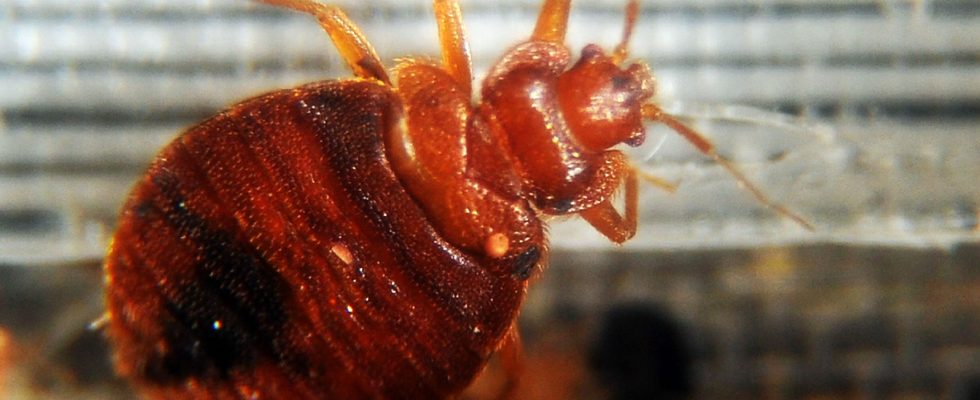Bedbugs are back more than ever in France, after having almost disappeared from our daily lives between 1950 and 1990. According to a study published in July 2023 by the National Agency for Food, Environmental and Occupational Health Safety (ANSES), these pesky insects infest more than one in ten French homes. At the end of August, the health burden of bedbugs once again appeared at the top of the news. The reason: several cinemas in the Ile-de-France region have been infested by these bedbugs.
On August 26, Nawal, a regular at the UGC Cinécité cinema in Bercy, in Paris, shared photos on social networks showing bites. “The odd rooms at the bottom of Bercy Village are infested with bedbugs […] The cinema management does NOT treat the theaters,” she wrote on X (formerly Twitter). Her message was immediately shared and other testimonies flooded in on social networks.
These small insects the size of an apple seed, which feed at night, mainly on human blood, live protected from light, most often in mattresses and box springs and are transported in clothing and beds. luggage. Result: we find them absolutely everywhere! Airbnb, luxury hotels, cinemas and even… hospitals. Nothing to do with the level of cleanliness of the place concerned. “It is a phenomenon totally independent of the social environment”, Karine Fiore, deputy director of social, economic and societal sciences at Anses, insisted at the end of July to AFP.
Reappearance of bedbugs
But then how can we explain the return of these parasitic insects which had disappeared from France for 40 years? Several reasons for this. The resurgence of bedbug infestations is explained first of all “by the evolution of our increasingly nomadic lifestyles, by our consumption patterns favoring second-hand purchases”, we can read in the study published by ANSES. For the entomologist Jean-Michel Berenger, guest of French Radio this summer, these population movements are favorable to bedbugs since “they move with us”. As a reminder, they do not have wings and do not jump.
On the other hand, if these insects were well controlled during the 20th century thanks to the use of synthetic insecticides, “their return would be linked to the phenomenon of resistance to these insecticides, explains the media The Conversation. Having taken refuge in a few suitable areas, the bedbugs having gradually acquired this resistance have been able to rebuild populations and set out again to conquer their former territories.” Finally, the lack of information due to the psychological and social problem represented by an infestation by bedbugs beds is a brake on their eradication.
Victims are sometimes afraid of being stigmatized and do not dare to talk about it. To remedy this, ANSES is calling for the establishment of a compulsory declaration mechanism and support for individuals with financial support, especially for households with low resources. The level of income is a factor in the persistence of the infestation because the fight can prove to be very costly: 866 euros on average per household, allocated to various rodent control measures, primarily cleaning measures and treatments.
Health control
As Anses writes, in France, the population and representatives of local authorities remain disarmed. “If the incidence of seeking care in general medicine due to bedbug infestation is low compared to all the consultations carried out, it nevertheless suggests a significant impact on people whose homes are infested (Blanchon et al. 2020). This is why the fight against these harmful effects on human health constitutes one of the priorities of the 4th national environmental health plan (PNSE42).
The National Health Security Agency has calculated the cost of the fight on a national scale for French households only. It reached 1.4 billion euros for the period 2017-2022, or an average of 230 million euros per year. As for the health cost, in 2019 it represented 83 million euros for the French, including 79 million euros associated with a drop in quality of life, sleep disorders and impacts on mental health, a million euros linked to work stoppages and around 3 million euros for physical care.
